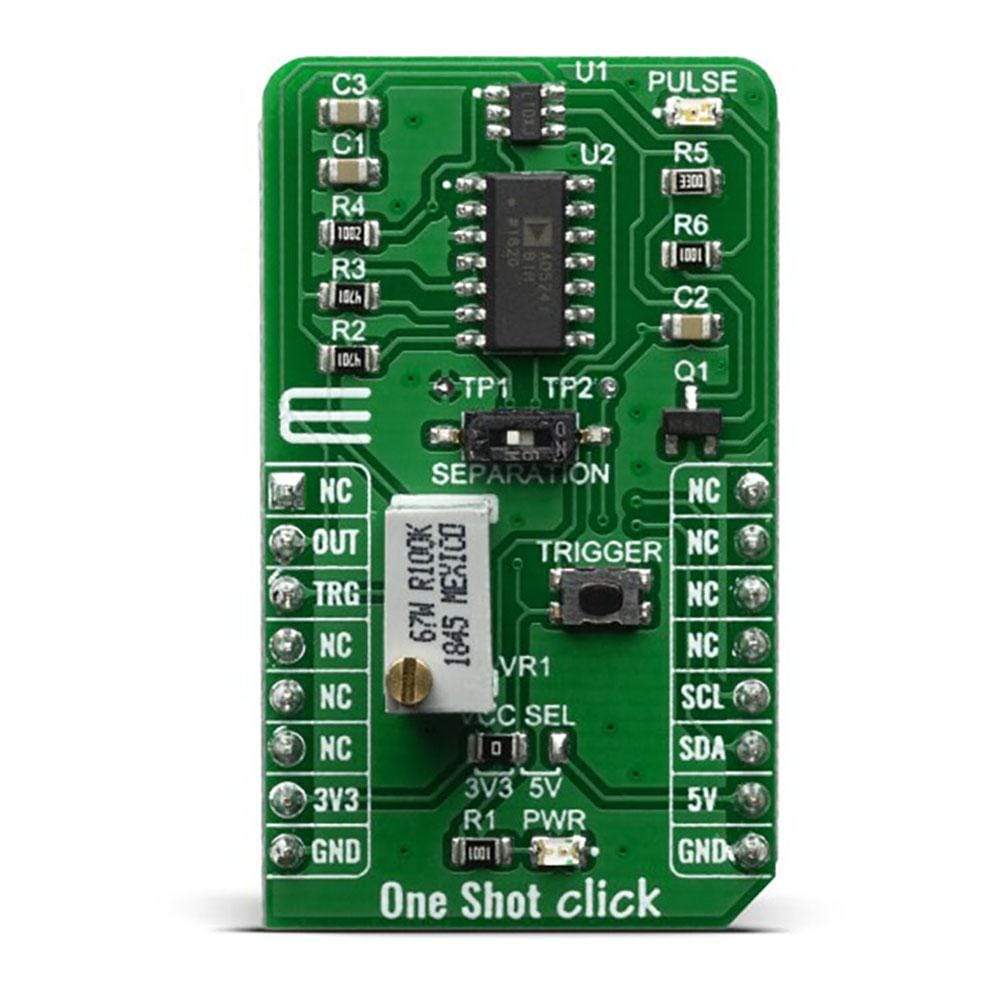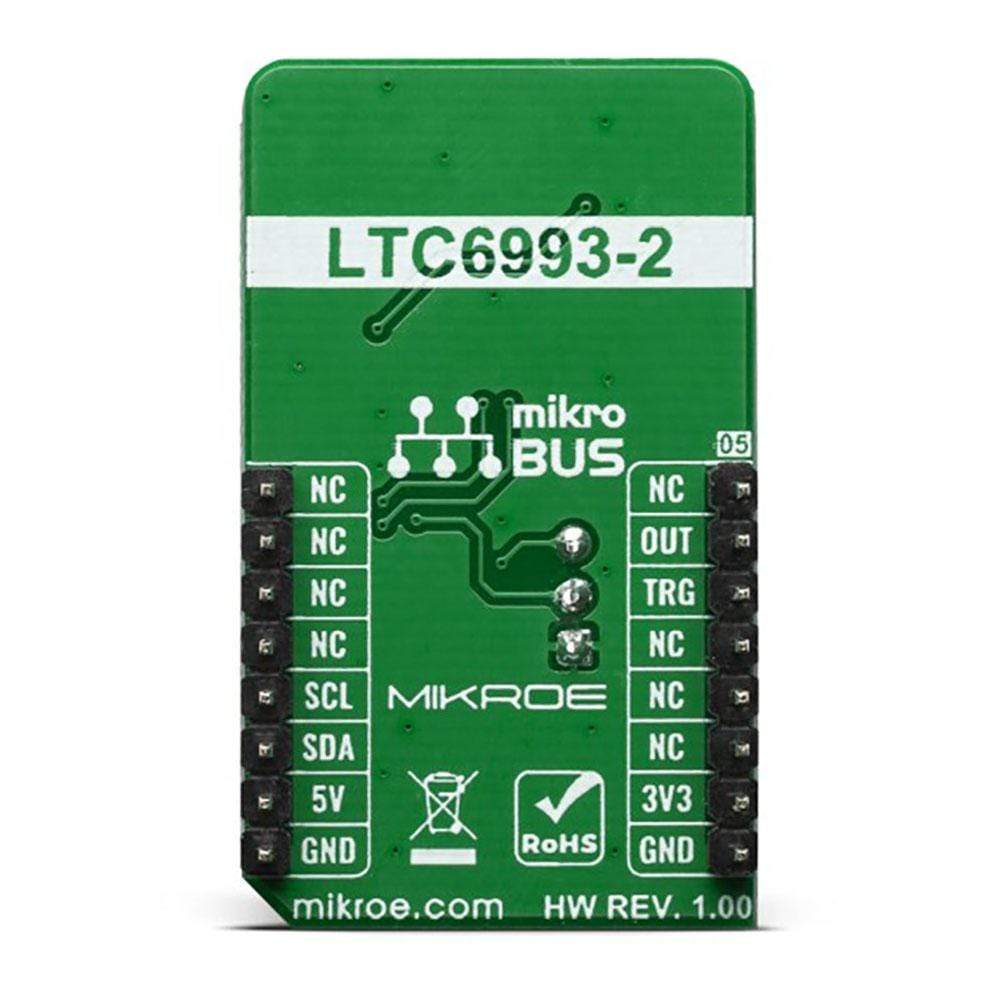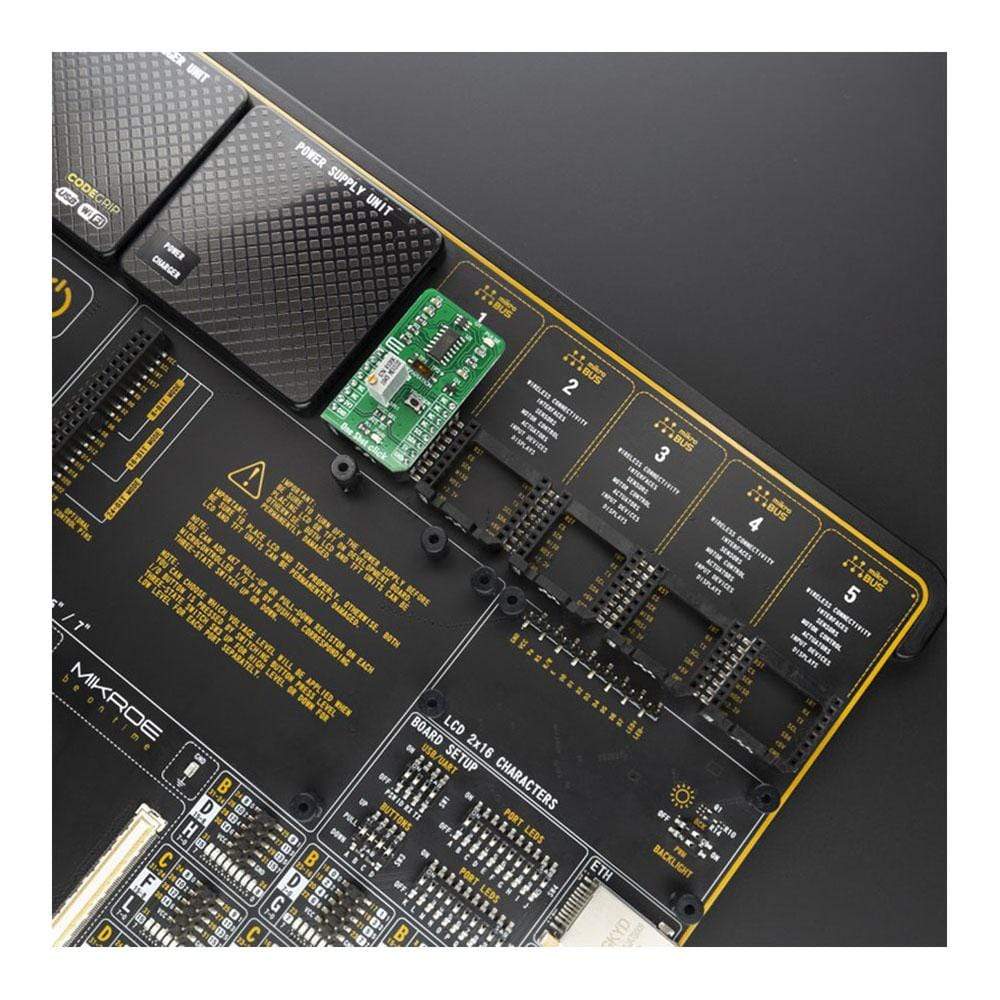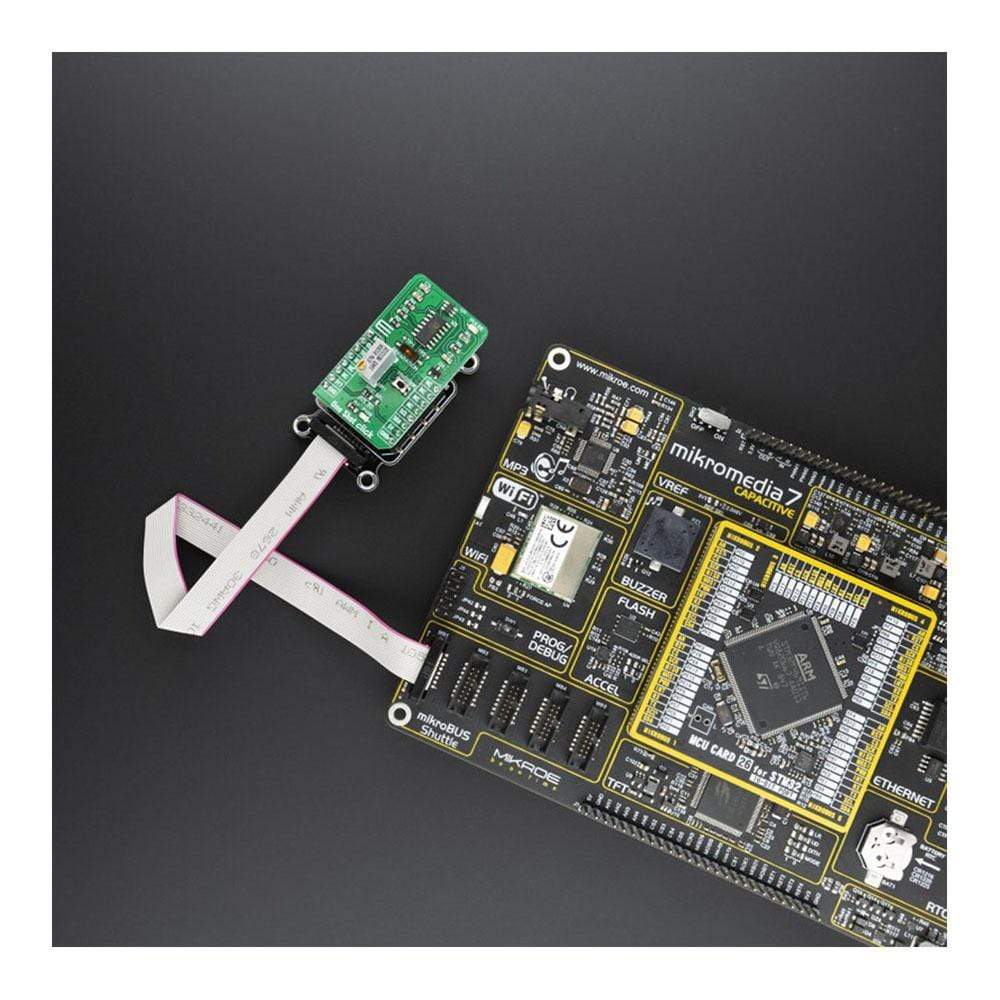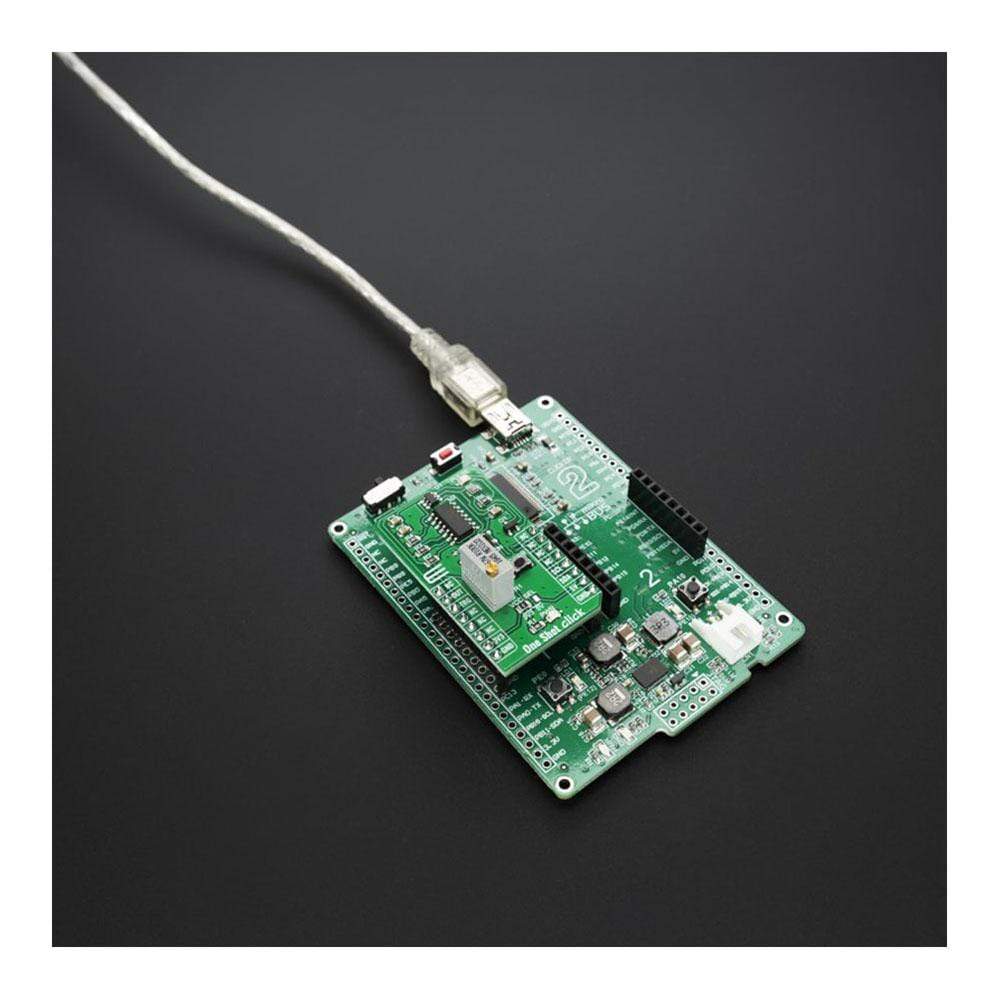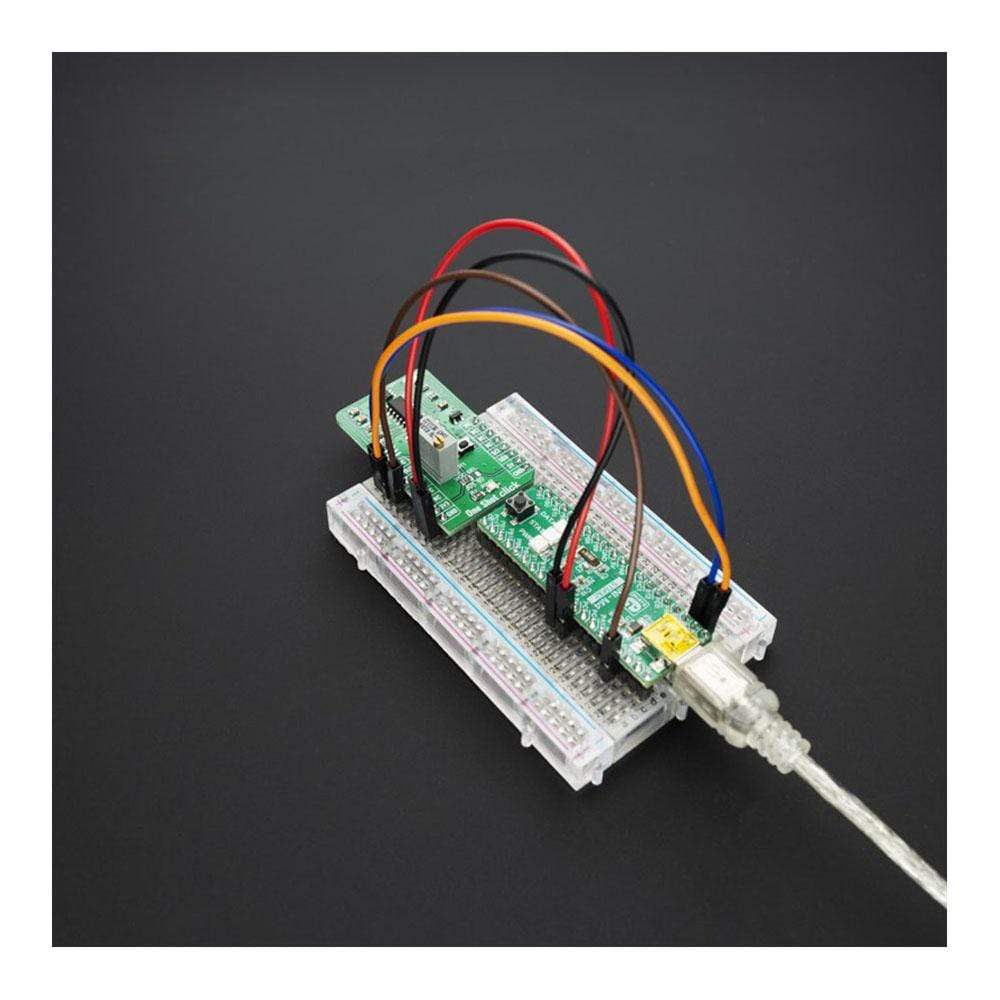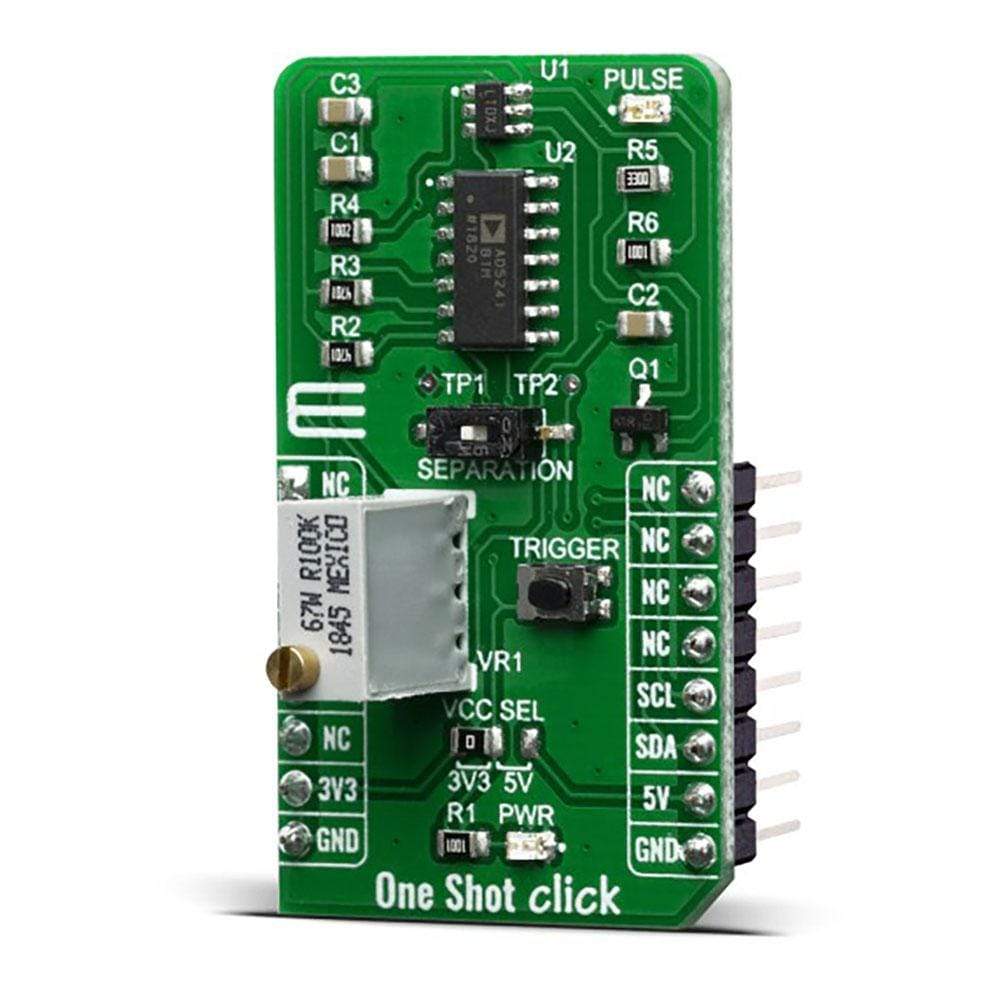

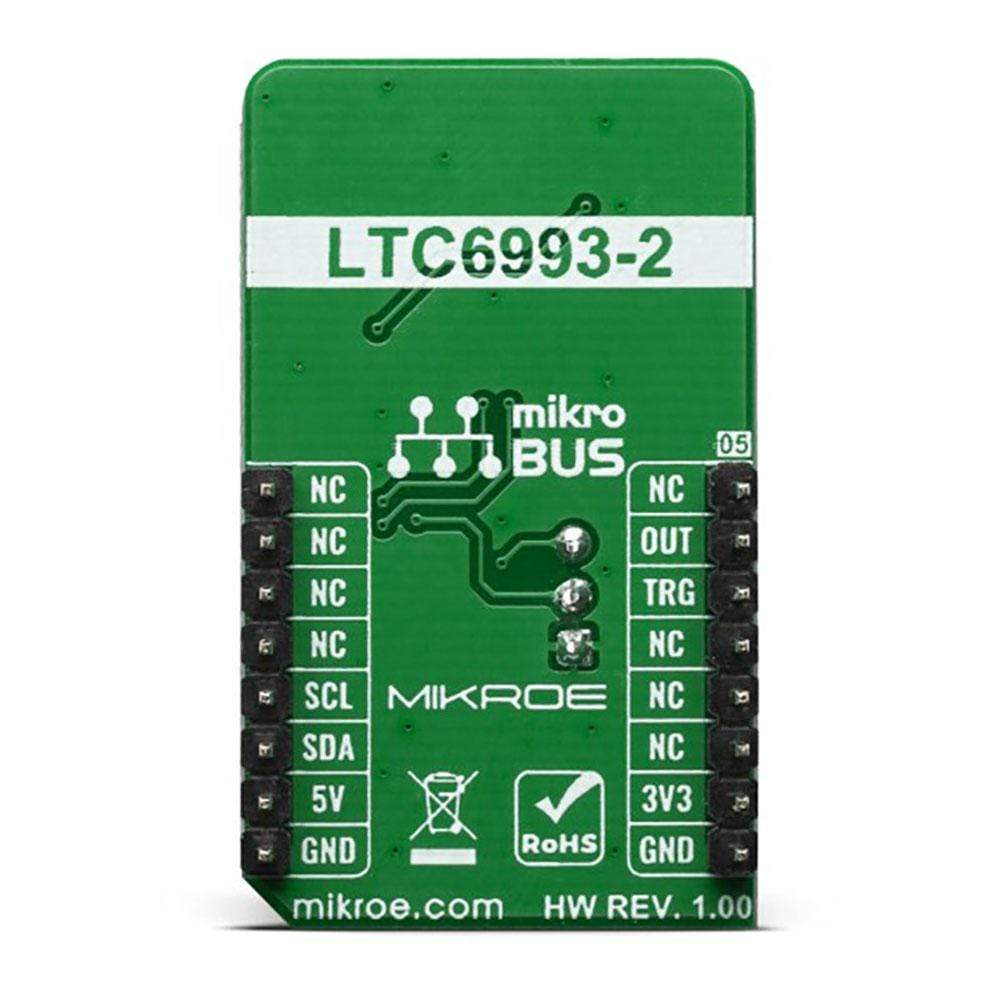
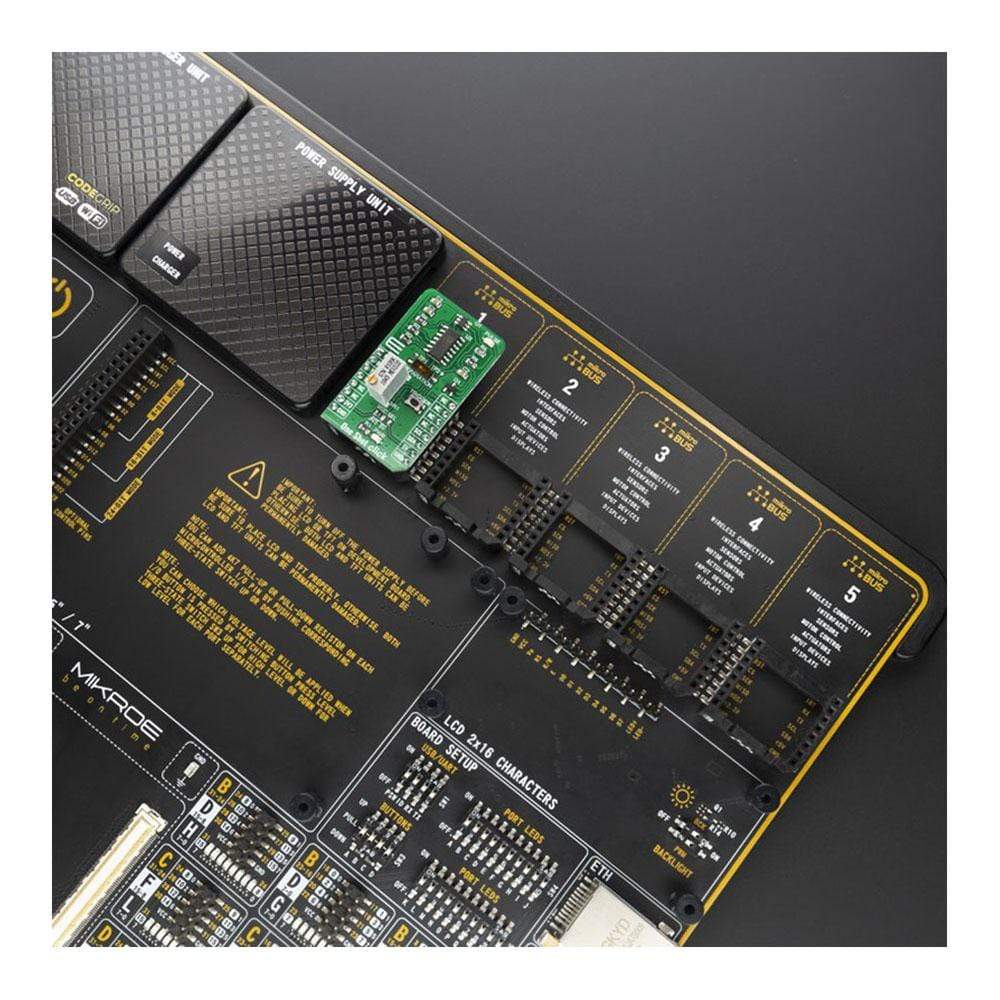
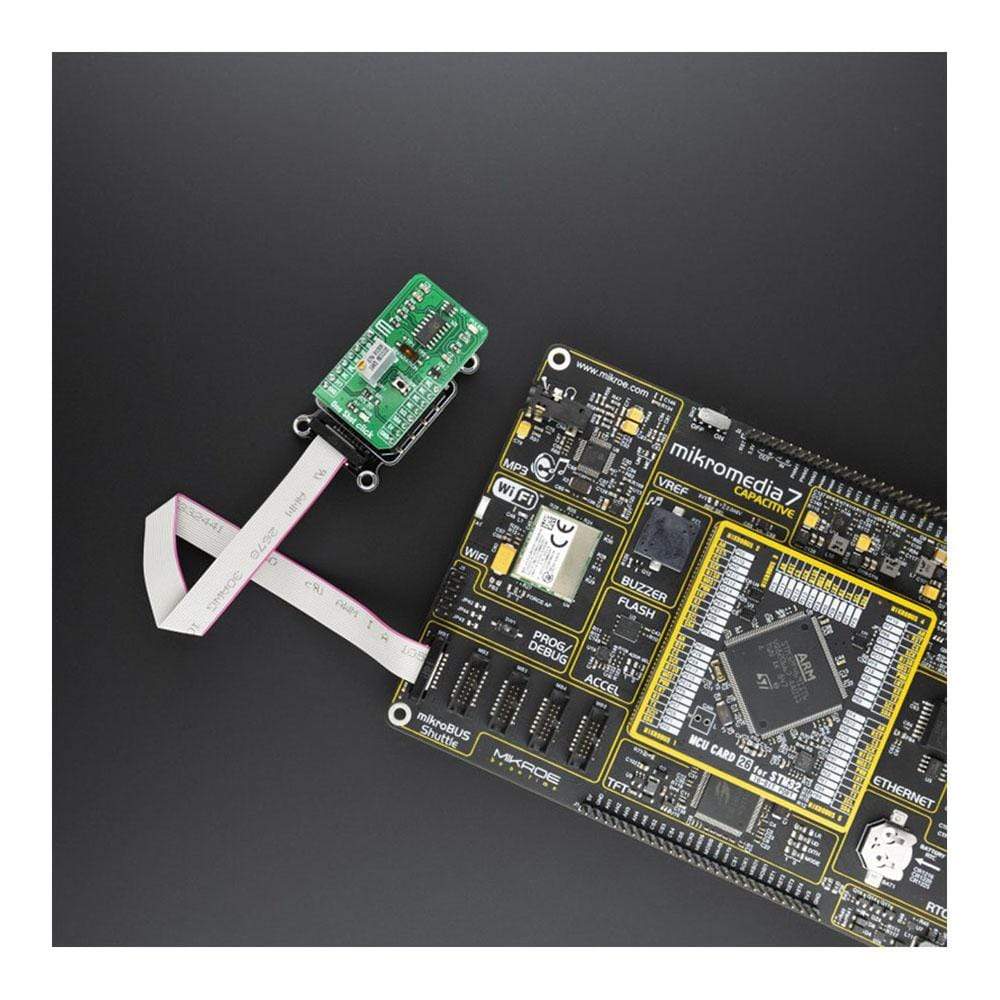
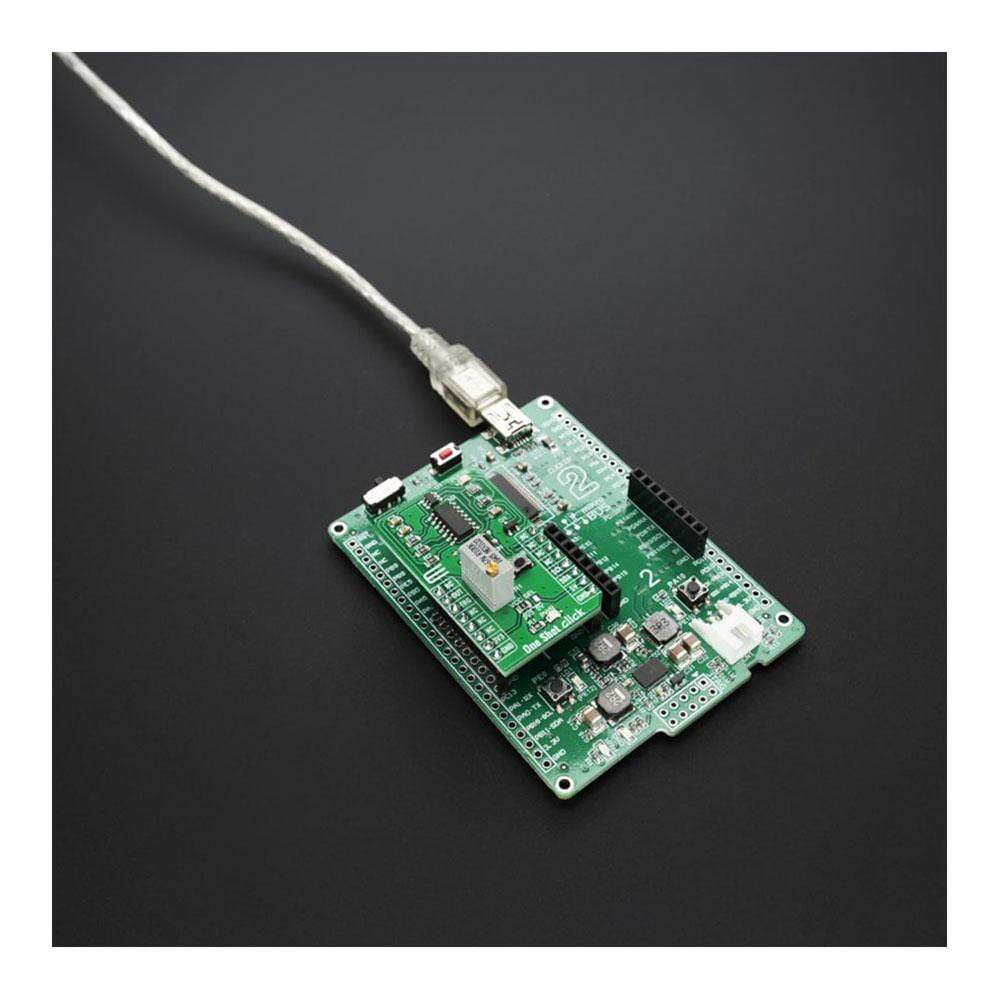
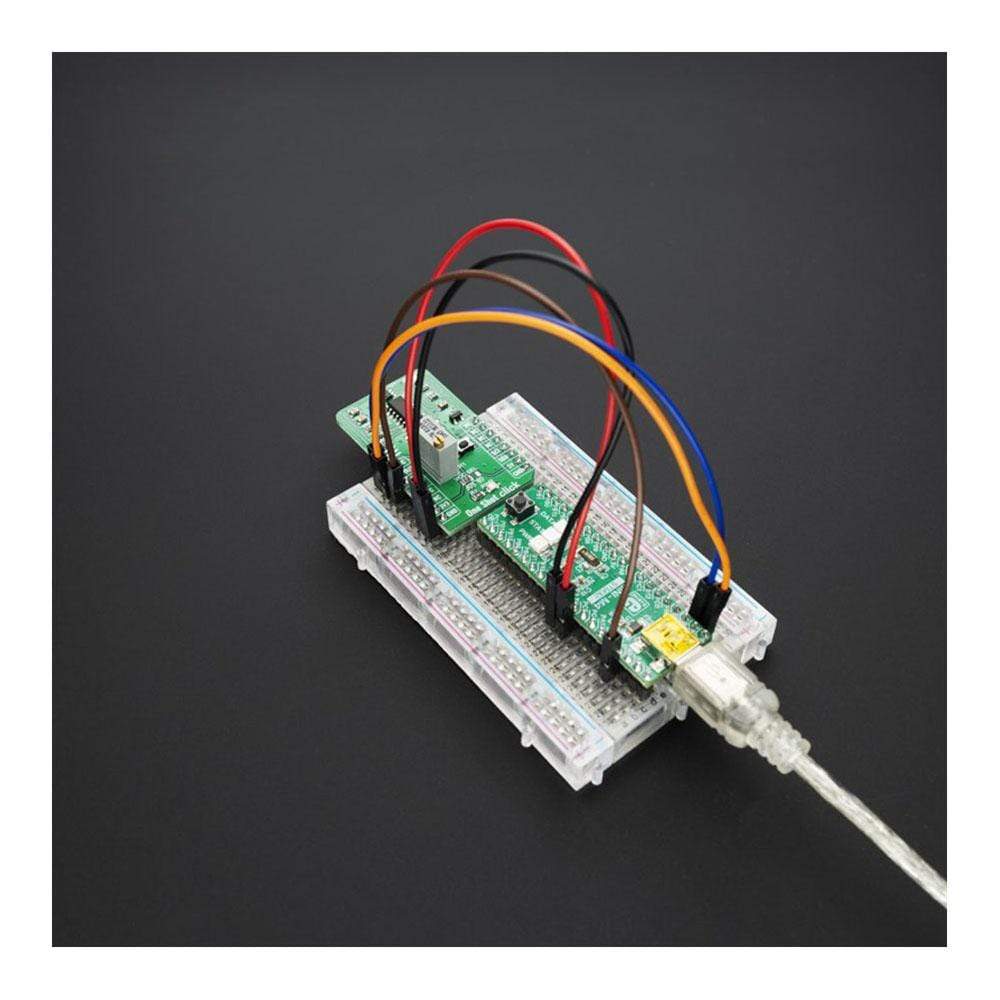
Overview
The One Shot Click Board™ is equipped with the monostable multivibrator (also known as a “one-shot” pulse generator) with a programmable pulse width of 1μs to 33.6 seconds. The used LTC6993-2 is part of the TimerBlox® family of versatile silicon timing devices, from Analog Devices. In addition to this, the One Shot Click also offers configurability for either positive or negative output pulse, fast recovery time, 70μA supply current, CMOS output driver 20mA sources/sinks and many more useful features, which makes this Click Board™ an ideal choice for applications such as watchdog timers, frequency discriminators, missing pulse detection, envelope detection and more.
The One Shot Click Board™ is supported by a mikroSDK compliant library, which includes functions that simplify software development. This Click Board™ comes as a fully tested product, ready to be used on a system equipped with the mikroBUS™ socket.
Downloads
How Does The One Shot Click Board™ Work?
The One Shot Click Board™ is equipped with the LTC6993-2, a monostable multivibrator (also known as a "one-shot" pulse generator) with a programmable pulse width of 1μs to 33.6 seconds, from Analog Devices. The LTC6993-2 is part of the TimerBlox® family of versatile silicon timing devices. A single resistor, RSET, programs an internal master oscillator frequency, setting the LTC6993's time base. The output pulse width is determined by this master oscillator and an internal clock divider, NDIV, programmable to eight settings from 1 to 221.
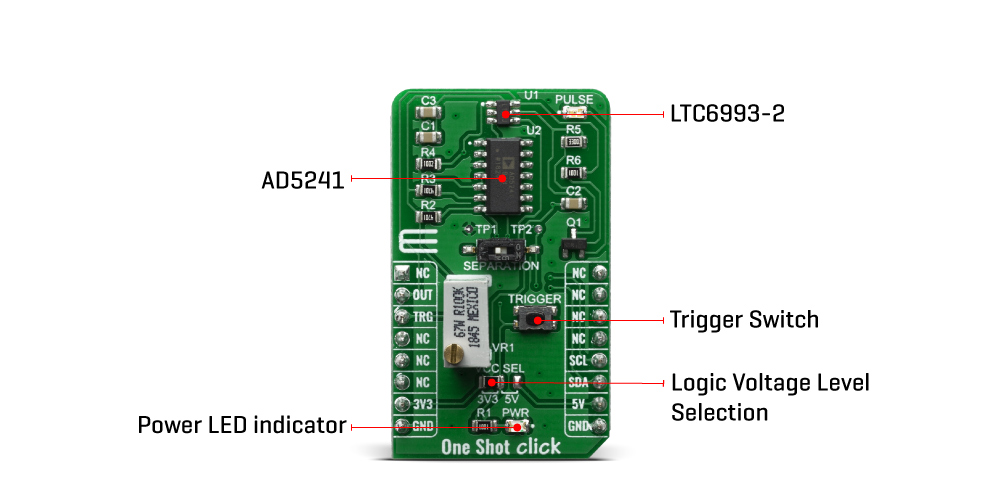
The output pulse is initiated by a transition on the trigger input (TRIG). Each part can be configured to generate positive or negative output pulses. The LTC6993-2 is available in four versions to provide different trigger signal polarity and retrigger capability. Besides that, LTC6993-2 also offers the ability to dynamically adjust the width of the output pulse via a separate control voltage, brought to the SET pin of the IC. Simple trimmer or potentiometer could be used, however due to reliability reasons, on One Shot Click, AD5241 digital potentiometer is used for that purpose. The word is about a 256-position digital potentiometer with low temperature coefficient (30 ppm/°C), also from Analog Devices. The AD5241 communicates with the microcontroller over the standard I2C interface, so that user can easily control and precisely calculate the output pulse width just with simple setting the wiper value in the AD5241 registers.
One Shot Click also contains the multi-turn trimmer wired as a a resistor divider between V+ and GND and brought to the DIV pin of the LTC6993-2. The DIV pin is the programmable divider and polarity input. The polarity input which pin voltage is internally converted into a 4-bit result (DIVCODE). The MSB of DIVCODE (POL) determines the polarity of the OUT pins. When POL = 0 the output produces a positive pulse. When POL = 1 the output produces a negative pulse. That way, user can easily set the output pulse width range and polarity, just by setting the desired voltage on the mentioned trimmer (VR1). This click board also contains test points in order to ease the access to the referent voltage to the user. One can simply separate the trimmer from the rest of the circuit using the separation switch (SW1), then precisely set and measure the desired voltage and then turn the switch back in the ON position.
One Shot Click is equipped with on-board SMD jumper labeled as the VCC SEL, which is used to select the operating voltage level, consequently limiting the amplitude of the output signal in respect to the selected voltage. That enables a selection between 3.3V and 5V operation, with the onboard SMD jumper, labeled as VCC SEL. This allows both 3.3V and 5V MCUs to be interfaced with this Click board™.
SPECIFICATIONS
| Type | Signal generator,Clock generator |
| Applications | Ideal choice for applications such as watchdog timers, frequency discriminators, missing pulse detection, Envelope Detection and more. |
| On-board modules | LTC®6993 - a monostable multivibrator (also known as a "one-shot" pulse generator) with a programmable pulse width from analog devices AD5241 - 256-Position Digital Potentiometer |
| Key Features | Configurability for positive or negative output pulse, fast recovery time, 70μA supply current, CMOS output driver 20mA sources/sinks and many more |
| Interface | GPIO,I2C |
| Compatibility | mikroBUS |
| Click board size | M (42.9 x 25.4 mm) |
| Input Voltage | 3.3V or 5V |
PINOUT DIAGRAM
This table shows how the pinout on One Shot Click corresponds to the pinout on the mikroBUS™ socket (the latter shown in the two middle columns).
| Notes | Pin |  |
Pin | Notes | |||
|---|---|---|---|---|---|---|---|
| NC | 1 | AN | PWM | 16 | NC | ||
| Output signal | OUT | 2 | RST | INT | 15 | NC | |
| Trigger input | TRG | 3 | CS | RX | 14 | NC | |
| NC | 4 | SCK | TX | 13 | NC | ||
| NC | 5 | MISO | SCL | 12 | SCL | I2C Clock | |
| NC | 6 | MOSI | SDA | 11 | SDA | I2C Data | |
| Power Supply | 3.3V | 7 | 3.3V | 5V | 10 | 5V | Power supply |
| Ground | GND | 8 | GND | GND | 9 | GND | Ground |
ONBOARD SETTINGS AND INDICATORS
| Label | Name | Default | Description |
|---|---|---|---|
| LD1 | PWR | - | Power LED Indicator |
| JP1 | VCC SEL | Left | Power supply voltage selection: left position 3V3, right position 5V |
| SW1 | SEPARATION | Right | VDIV voltage separation switch |
| General Information | |
|---|---|
Part Number (SKU) |
MIKROE-3877
|
Manufacturer |
|
| Physical and Mechanical | |
Weight |
0.019 kg
|
| Other | |
Country of Origin |
|
HS Code Customs Tariff code
|
|
EAN |
8606018719341
|
Warranty |
|
Frequently Asked Questions
Have a Question?
Be the first to ask a question about this.


